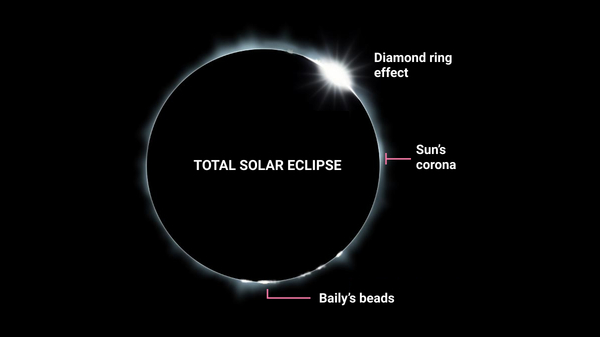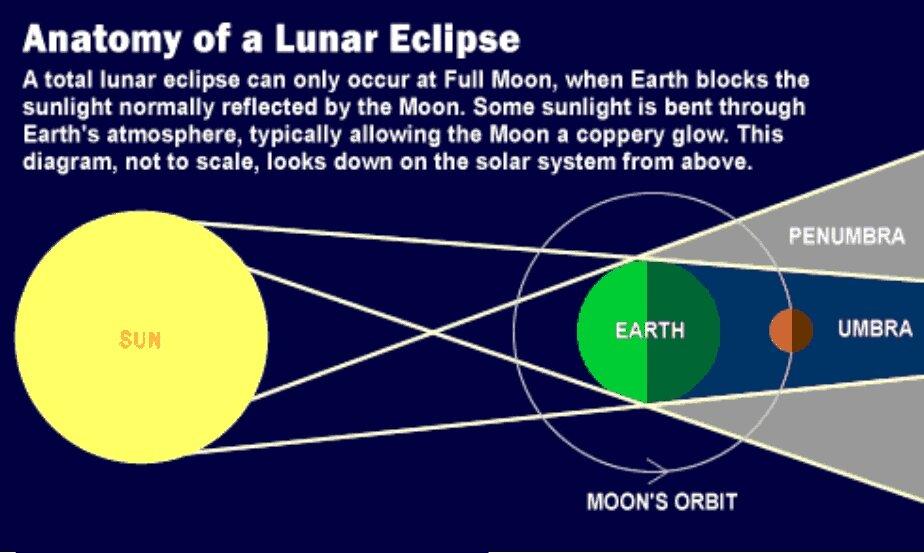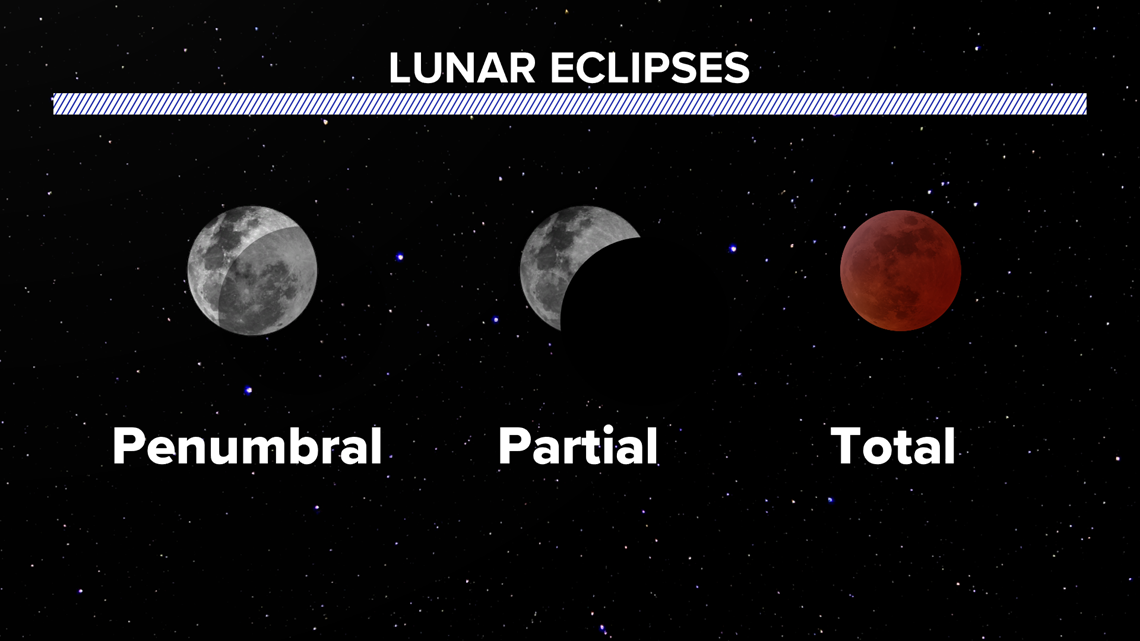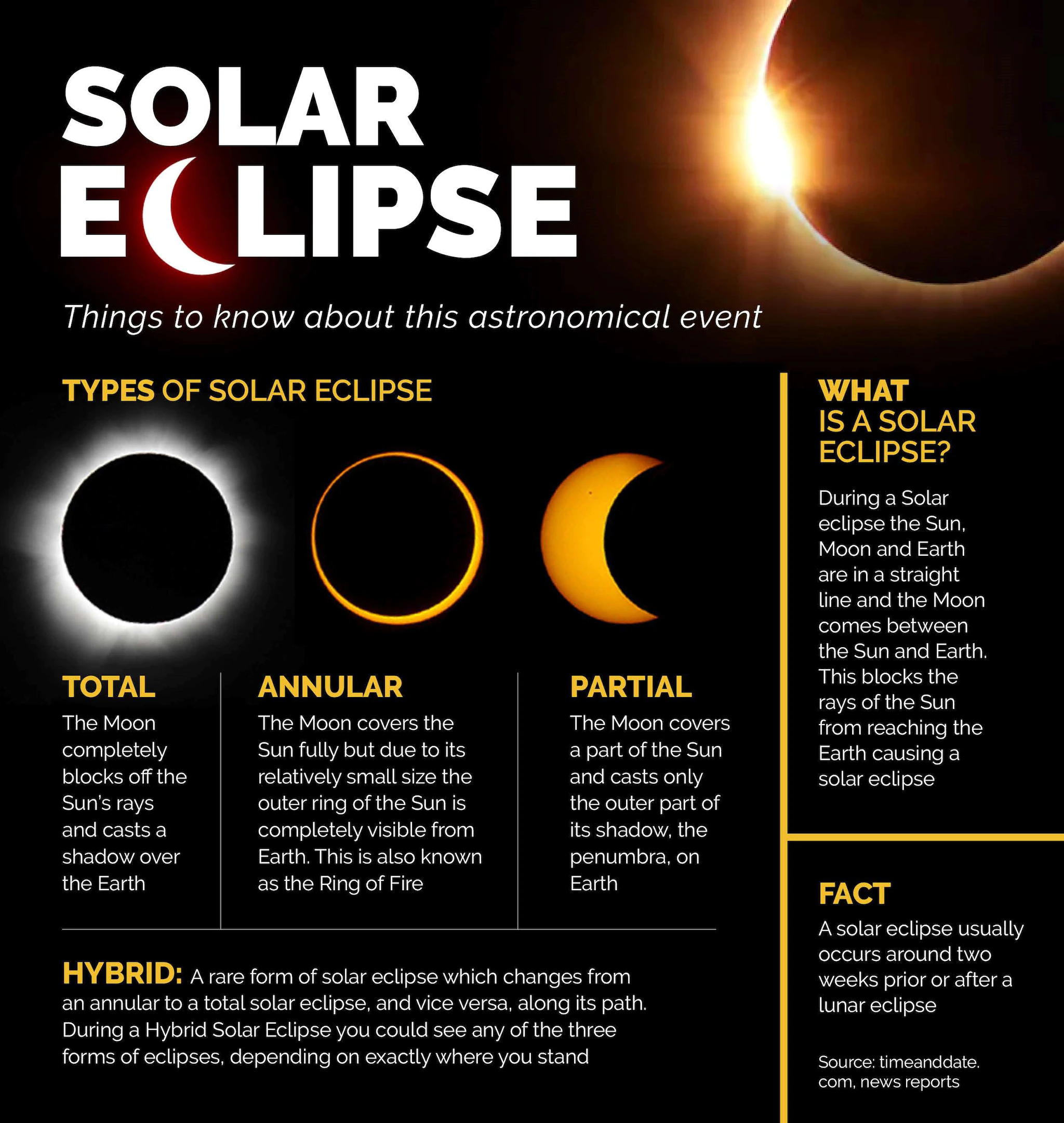Geography
Types of Eclipses
- 09 Nov 2022
- 6 min read
For Prelims: Lunar Eclipse, Solar Eclipse, Full Moon, Reyleigh Scattering.
For Mains: Total Lunar Eclipse.
Why in News?
Recently, a Total Lunar Eclipse (TLE) occurred on 8th November, 2022.
- Earlier Indian witnessed a Partial Solar Eclipse in October 2022.
What is the Lunar Eclipse?
- About:
- Lunar eclipse takes place when the Moon moves into the Earth’s shadow. The Earth has to be directly between the Sun and the Moon, and a lunar eclipse can only take place during a full Moon.
- First, the Moon moves into the penumbra – the part of the Earth’s shadow where not all of the light from the Sun is blocked out. Part of the Moon’s disc will look dimmer than a regular full Moon.
- And then the Moon moves into the Earth’s umbra, where direct light from the Sun is totally blocked out by the Earth. This means the only light reflecting off the Moon’s disc has already been refracted, or bent, by the Earth’s atmosphere.
- Total Lunar Eclipse:
- A Total Lunar Eclipse happens when the earth is positioned between the sun and the moon and casts a shadow on the latter.
- During this, the whole of the lunar disc enters the Earth’s umbra, so the Moon appears reddish (Blood Moon).
- The moon takes on a reddish hue due to a phenomenon called Rayleigh scattering.
- Rayleigh scattering is the scattering of light by particles in a medium without a change in wavelength. This is also the reason why the sky appears blue.
- The moon turns red during the eclipse since the only sunlight reaching it is passing through the earth’s atmosphere. The sunlight scatters due to the dust or clouds in the atmosphere producing the red colour.
- Total lunar eclipses occur, on average, about once every year and a half, according to NASA (National Aeronautics and Space Administration).
- Partial lunar eclipse:
- An imperfect alignment of Sun, Earth and Moon results in the Moon passing through only part of Earth's umbra.
- The shadow grows and then recedes without ever entirely covering the Moon.
- Penumbral eclipse:
- The Moon travels through Earth’s penumbra, or the faint outer part of its shadow.
- The Moon dims so slightly that it can be difficult to notice.
What is Solar Eclipse?
- About:
- A solar eclipse happens when the Moon passes between the Sun and Earth, casting a shadow on Earth that either fully or partially blocks the Sun’s light in some areas.
- Types:
- Total Solar Eclipse:
- Total solar eclipses occur when the New Moon comes between the Sun and Earth and casts the darkest part of its shadow, the umbra, on Earth. A full solar eclipse, known as totality, is almost as dark as night.
- During a total eclipse of the Sun, the Moon covers the entire disk of the Sun.
- When the Moon completely covers the disk of the Sun, only the Sun's corona is visible.
- It is called Total eclipse because at the maximum point of the eclipse (midpoint of time of totality), the sky goes dark and temperatures can fall.

- Annular Solar Eclipse:
- An annular solar eclipse happens when the Moon passes between the Sun and Earth, but when it is at or near its farthest point from Earth.
- Because the Moon is farther away from Earth, it appears smaller than the Sun and does not completely cover the Sun.
- As a result, the Moon appears as a dark disk on top of a larger, bright disk, creating what looks like a ring around the Moon.
- Partial Solar Eclipse:
- A partial solar eclipse happens when the Moon passes between the Sun and Earth but the Sun, Moon, and Earth are not perfectly lined up.
- Only a part of the Sun will appear to be covered, giving it a crescent shape. During a total or annular solar eclipse, people outside the area covered by the Moon’s inner shadow see a partial solar eclipse.
- Hybrid Solar Eclipse:
- Because Earth's surface is curved, sometimes an eclipse can shift between annular and total as the Moon’s shadow moves across the globe.
- This is called a hybrid solar eclipse.
- Total Solar Eclipse:









